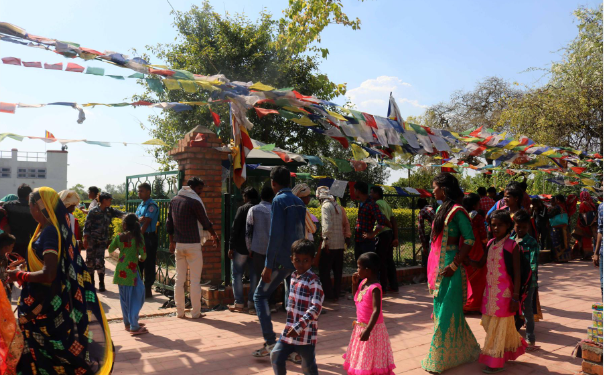The historic Mayadevi Maternity Path, linked to the birth of Buddha, is in dire need of promotion, conservation, and development. This significant route, traveled by Mayadevi after giving birth to Buddha, has faded into obscurity due to the lack of proper promotion and conservation efforts.
Access to the Mayadevi Maternity Path, which stretches from Lumbini to Tilaurakot, has been restricted. The path, approximately 36 kilometers long, starts from the Mayadevi Temple in Lumbini and passes through villages like Padariya, Khungai, Manauri, Sibalwa, Bijuwa, Sisahaniya, Dohani, and Niglihawa, finally reaching the Tilaurakot Palace. However, the Lumbini Development Trust has restricted access, citing conflicts with the Lumbini Master Plan, which has caused disappointment among pilgrims and tourists.
Meghnath Acharya, an activist from Lumbini Cultural Municipality-6, expressed concerns over the lack of attention towards the promotion and conservation of this historically significant path. In December 2020, UNESCO representatives Christian Manhart and consultant Thomas Skorom undertook a four-hour cycling journey from Lumbini to Tilaurakot, highlighting the potential of this route.
Vikram Pandekaji, a former goodwill ambassador of the Lumbini Development Trust and tourism expert, proposed transforming this path into a ‘tourism product.’ Former priest of the Mayadevi Temple, Pandit Yogendranath Pandey, emphasized the deep religious significance of the path, connecting it to the journey of Mayadevi with the infant Buddha.
Buddhist monk Vivekananda noted that historically, the Mauryan Emperor Ashoka, under the guidance of his spiritual mentor Upagupta, entered Lumbini via this path in 249 BCE. Chinese travelers like Tseng Tsai (4th century), Faxian (5th century), and Xuanzang (7th century) also followed this route to reach Lumbini. In 1312, King Ripumalla of the Karnali region and later archaeologists like Alois Führer (1896), P.C. Mukherjee (1899), and Devla Mitra (1962) used this path during their explorations.
The closure of the main entrance at Padariya village and the lack of conservation efforts by the Lumbini Development Trust threatens to erase the Mayadevi Maternity Path from collective memory. Vivekananda stressed the need for effective management and reopening of the path, citing its religious and historical importance.
Akramuddin Khan, coordinator of the Save Lumbini Grand Campaign, called for the immediate conservation and promotion of the Mayadevi Maternity Path by the concerned authorities. He highlighted the negative impact of the access restriction on the promotion of Buddha’s birthplace, tourism, culture, and history.
Coordinator Khan urged the Lumbini Development Trust to reopen the main entrance at Padariya village for the public and religious pilgrims. He emphasized that this would boost tourism, enhance publicity, and increase local income levels. He also called for the Ministry of Culture, Tourism, and Civil Aviation, along with the Lumbini Development Trust, to allocate special plans, programs, and budgets for the conservation and promotion of the path.
Gajendra Gupta, an assistant professor at Lumbini Buddhist University, emphasized the need for cooperative conservation and promotion of the path, taking into account the pride and significance of Lumbini. He stressed the importance of managing various tourist facilities to attract religious tourists and bolster the local economy.
Assistant Professor Gupta also highlighted the need for further research based on historical documents and verified facts to expand the understanding of the Mayadevi Maternity Path’s importance. He suggested that conservation efforts could educate Buddhist followers worldwide about this sacred route.
Sanu Raja Shakya, a member secretary of the Lumbini Development Trust, shared that plans are being made to manage the Mayadevi Maternity Path within the Trust’s area. Emphasizing the historical and religious significance of the path, he noted the efforts to conserve it from an environmental and tourist perspective. The Trust is preparing development plans to organize the segment from Padariya to the Mayadevi Temple, with necessary infrastructure construction in coordination with local stakeholders.
Shakya outlined plans to develop and green the path attractively, plant trees, ensure regular cleaning, and place informational signs to educate tourists about its significance. Discussions are ongoing with all three levels of government for budget proposals and to ensure the path’s effective reconstruction and management.






